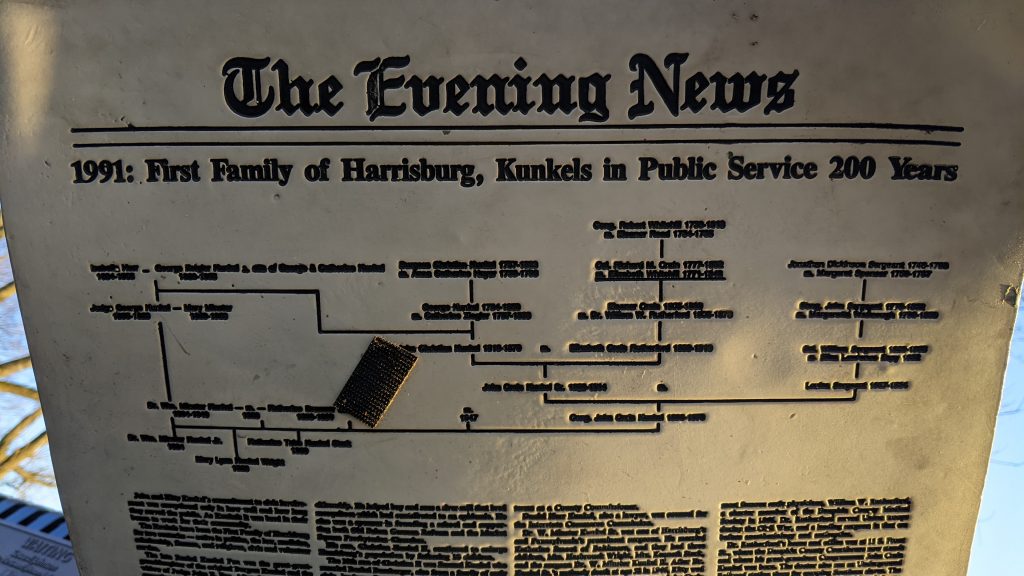I spent the past weekend in Harrisburg, Pennsylvania on a brief holiday to go watch some minor league baseball. That explains the lack of posting the last few days. (Housekeeping note, this coming weekend is Orthodox Easter, so I’ll be on holiday for that as well.)
Whilst in Harrisburg I did other things besides watch baseball because minor league games are so much faster now. (Maybe more on that in another post.) So after a Sunday afternoon match, I grabbed my camera and went for a walk about town. Mostly I photographed buildings and things, but at one point I came upon a gentleman sitting reading a paper on a bench.
Except it wasn’t a person; it was a statue.
Entitled “Waiting”, the statue portrays a bespectacled man reading a newspaper with a briefcase and an upturned brimmed hat sitting neatly atop said briefcase. (I’d show you the photo, but it’s still on my camera waiting to be downloaded.)
I was curious what the man was reading. Was it relevant? Did it say something important? Or was it lorem ipsum or placeholder text?
As it turned out, the paper told the story of a founding family of Harrisburg via article headlines. But on the front page, we had a nice little family tree diagram. And that’s what makes this anecdote germane to this blog.

I cannot read the specific details, nor did I want to. The paper was angled downwards, light was fading as the sun was setting, and this was backlit enough already.
The sculpture dates from 1992, making that headline the most recent article. From that, I will probably be able to do some of my own research and create my own version of that family tree, because I could not read it and now I’m curious. But what appears to be happening is primarily the ancestors of one line of one person’s—this gentleman’s?—parents. But critiquing it further is complicated by the illegibility of the chart.
Of course I should point out that the point was probably not a legible genealogical descent chart, but rather to in a quick visual show the person in particular comes from a long line of people, presumably public servants all or most.
Credit for the piece goes to the sculptor, Seward J. Johnson Jr.
